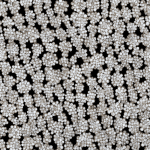Gone are the days when using a mobile phone was merely for making calls or sending texts. It’s a new era, where smartphones have become an essential part of our lives. But have you ever wondered about the technological advancements that have made your smartphone screens more visible and durable than ever? Let’s delve into the world of emerging screen technologies to find out.
OLED and AMOLED – A New Era of Visibility
OLED and AMOLED displays have revolutionized the visibility aspect of smartphone screens. But how? Let’s break it down.
Sujet a lire : How Do Extreme Sports Athletes Train for Mental and Physical Endurance?
The term OLED stands for Organic Light Emitting Diodes. Unlike traditional LED or LCD screens, OLED technology uses organic materials that emit light when electricity is applied. This allows for individual pixels to be switched on or off, leading to true blacks and a stunning contrast ratio. The end result? An amazing viewing experience on your smartphone screen.
AMOLED, or Active Matrix Organic Light Emitting Diodes, takes OLED technology a step further. It adds an active matrix TFT backplane, which enables faster pixel switching. This leads to sharper images and smoother video playback. In essence, an AMOLED display can offer superior image quality, with deeper blacks and brighter colors, enhancing the visual experience in more ways than you could imagine.
A lire également : What Are the Strategies for Real Estate Investment in Climate-Change Resilient Areas?
Quantum Dot Technology – Brightness and Color Like Never Before
Quantum Dot Technology is another revolutionary screen technology that has changed the way we perceive colors and brightness on our smartphone screens.
Quantum Dots are tiny particles, just a few nanometers in size, that emit light of a certain color when hit by light of a higher energy level. By controlling the size of the Quantum Dots, manufacturers can manipulate the color of light they emit. This results in a much wider color gamut, with more vibrant and true-to-life colors.
Moreover, Quantum Dots can produce brighter images without increasing power consumption. This makes it a great technology for enhancing visibility in smartphones, especially in outdoor settings. So, the next time you’re out in the sun, struggling to read an important email on your smartphone, remember it’s the Quantum Dot Technology working to enhance your visibility.
Gorilla Glass – The Backbone of Smartphone Durability
The durability of a smartphone screen is as crucial as its visual qualities. A visually stunning phone is of little use if it shatters at the slightest drop. That’s where Gorilla Glass comes into the picture.
Gorilla Glass, developed by Corning Inc., is a type of chemically strengthened glass, designed to be thin, light, and damage-resistant. It incorporates a special chemical process, which forces large ions into the glass surface, creating a layer of compressive stress. This layer makes the glass more resistant to damage from everyday wear and tear.
Coincidentally, the latest version, Gorilla Glass Victus, offers 2x better scratch resistance and can survive drops from up to 2 meters. The next time you drop your phone and it doesn’t shatter into pieces, remember to thank Gorilla Glass for its durability.
Flexible and Foldable Screens – The Future of Smartphone Displays
What if you could fold your smartphone just like a piece of paper? Sounds like science fiction, right? But with flexible and foldable screens, this fiction is becoming a reality.
Flexible and foldable screens use OLED technology and a flexible substrate, such as plastic or thin metal, instead of rigid glass. This allows the display to bend without damaging the internal workings of the screen. Major smartphone manufacturers like Samsung and Huawei have already released models with foldable screens, paving the way for a new era in smartphone display technology.
This technology not only enhances visibility by offering larger display areas but also adds a unique factor to the durability of the device. As you can imagine, a screen that can flex and bend is less likely to break from a fall or impact.
Screen Protectors – An Additional Layer of Protection
Last but not least, let’s not forget the role of screen protectors in enhancing the durability of our smartphone screens.
Screen protectors are thin sheets of plastic or glass adhered to the smartphone screen’s surface. They provide an additional layer of protection against scratches, smudges, and in some cases, even impact. And with new advancements like tempered glass and liquid screen protectors, the level of protection is more significant than ever. So, while the underlying screen technologies do most of the heavy lifting, screen protectors serve as the frontline defense, guarding your precious smartphone screen against the world.
In conclusion, emerging screen technologies are not just improving the visibility and vibrancy of our smartphone screens but are also making them increasingly durable. Through innovations like OLED, AMOLED, Quantum Dot Technology, Gorilla Glass, flexible screens, and advanced screen protectors, the smartphone screens of today are designed to offer the best viewing experience, while also withstanding the rigors of our daily lives.
MicroLED Technology – The Next Big Thing in Smartphone Displays
MicroLED is a term that you might not have come across yet, but it is set to become a major player in the future of smartphone displays. Allow us to shed some light on this.
MicroLED technology is essentially a miniature version of the traditional LED. It involves the use of tiny, microscopic light-emitting diodes to form the individual pixels in a display. These MicroLEDs are much smaller than the width of a human hair, yet they are capable of providing brighter, more vibrant colors, and a much higher contrast ratio than any existing display technology.
One of the biggest advantages of MicroLED is its superior power efficiency. Because each pixel emits its own light, there is no need for a power-consuming backlight, as in the case of LCD screens. This means that MicroLED displays can potentially increase a smartphone’s battery life considerably.
Furthermore, because MicroLEDs are made of inorganic materials, they are much more durable and less susceptible to burn-in issues, compared to OLED displays which are made from organic materials. So, not only does MicroLED promise to enhance the visibility of smartphone screens, but it also has the potential to significantly improve their durability.
Blue Light Filter – Protecting Your Eyes From Harmful Light
While smartphone screens have certainly become more visible and durable, it’s equally important to consider the impact these screens have on our eye health. This is where Blue Light Filter technology comes in.
Blue light, while necessary for our natural sleep and wake cycle, can be harmful to our eyes in large doses. Prolonged exposure to blue light emitted by smartphone screens can cause digital eye strain and can interfere with our sleep pattern.
Blue Light Filter technology works by reducing the amount of blue light emitted by your smartphone screen. It does this by adjusting the color temperature of the display, giving it a warmer, more yellowish tint. While this may slightly alter the color accuracy of the display, it can go a long way in reducing eye strain and promoting better sleep.
So, the next time you find yourself scrolling through your smartphone late at night, remember to turn on your Blue Light Filter. This will not only help protect your eyes from harmful blue light but also ensure a better night’s sleep.
Conclusion
The world of smartphone screen technology is evolving at a rapid pace. From OLED and AMOLED displays offering stunning visual experiences, Quantum Dot Technology painting our screens with more vibrant colors, Gorilla Glass ensuring our screens can withstand the accidental drops, to the advent of flexible and foldable screens, and even the promise of MicroLED, the future of smartphone displays looks brighter than ever.
Add to this the protection offered by advanced screen protectors and the health-conscious Blue Light Filters, and we have a technology landscape that is focused not just on enhancing visibility and durability, but also on ensuring the well-being of users.
As we move further into the digital age, one thing is clear – our reliance on these digital screens is only going to increase. And as it does, so too will the importance of the technologies that power them. In essence, the future of smartphone screens is one of vibrant colors, lasting durability, and thoughtful innovation.










